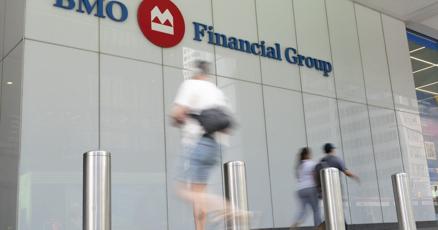In a financial landscape still adjusting to post-pandemic realities, Bank of Montreal has delivered a standout performance that caught the attention of investors and market analysts alike. BMO Financial Group reported a second-quarter profit of $1.96 billion, marking a significant upswing in both bottom-line performance and overall revenue generation.
The bank’s quarterly report, released Wednesday, revealed adjusted earnings of $2.13 per diluted share for the quarter ending April 30, demonstrating the institution’s resilience amid challenging economic conditions. This represents a notable improvement from the same period last year when BMO posted adjusted earnings of $2.09 per diluted share.
“The combination of strategic acquisitions and disciplined core business growth has positioned BMO to capitalize on market opportunities despite persistent headwinds,” said financial analyst Morgan Reynolds, who closely follows Canadian banking sector performance.
Revenue climbed to $8.24 billion, up from $7.98 billion in the corresponding quarter of 2023. This 3.3% increase reflects BMO’s ability to generate stronger returns across its diversified business segments at a time when many financial institutions are struggling to maintain momentum.
The provision for credit losses—funds set aside to cover potentially bad loans—increased to $705 million compared with $389 million a year earlier. This prudent approach to risk management signals BMO’s cautious outlook on economic conditions while maintaining forward momentum.
BMO’s Canadian personal and commercial banking operations reported a profit of $920 million, down slightly from $926 million in the same quarter last year. Meanwhile, the U.S. personal and commercial banking division recorded earnings of $661 million, compared with $707 million in the prior year period.
The wealth management segment demonstrated particular strength, with profits rising to $308 million from $284 million. Capital markets operations also showed improvement with earnings of $438 million, up from $396 million.
“What’s particularly impressive about BMO’s performance is the balanced growth across multiple business lines,” noted financial sector strategist Priya Sharma. “This diversification provides a buffer against sector-specific challenges and positions the bank for sustained growth.”
BMO’s integration of Bank of the West continues to yield operational efficiencies, with the bank reporting that cost synergies from the acquisition are materializing faster than initially projected. This strategic move has significantly expanded BMO’s U.S. footprint, creating new revenue streams and cross-selling opportunities.
The bank maintained its quarterly dividend at $1.51 per share, prioritizing stability for shareholders while continuing to invest in digital transformation initiatives and market expansion strategies.
As interest rates remain elevated and economic uncertainty persists, BMO’s solid quarterly performance raises a compelling question: Has the bank found the winning formula for navigating the complex post-pandemic financial landscape while positioning itself for future growth?










